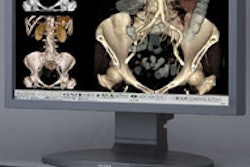SCOTTSDALE, AZ - PACS is a disruptive technology in the sense that it impacts every task conducted by a radiology department. Because technologists are on the front line of service, both to patients and radiologists, the effect on their workflow can be particularly dramatic. A presentation at the Digital X-Ray and PACS forum on Monday offered guidelines for easing technologists' transition to a filmless practice.
"The impact of PACS from the technologist's perspective begins long before the first image is pushed into the PACS," said Richard Guarino, director of radiology at Newton-Wellesley Hospital in Newton, MA.
How dramatic a change a department's technologists will experience depends on the group's experience with digital imaging equipment, Guarino said. If the facility has yet to adopt CR or DR technology, then worklist managers, barcode guns, cassette readers, quality assurance (QA) workstations, and cassette readers will replace flash cards and processors.
Adopting this technology will produce significant changes in the technologist's workflow. Without identifying prescribed and described workflows, the PACS implementation and its attendant productivity gains can be severely compromised.
Guarino explained that prescribed workflow is the way processes and procedures are expected to be performed, while described workflow is the way in which processes and procedures are actually performed.
"In any radiology department we can expect situations to arise where the prescribed workflow patterns will not be followed," he said. "The technologist may change the progression of steps in the prescribed workflow, or even eliminate steps altogether. This practice can be problematic in the digital world."
The first step in the process is to identify the group's digital needs, Guarino said. Each modality has its own unique workflow needs. In addition, the workflow of the night and weekend shifts may have subtle nuances that differ from the day shift. These all need to be captured in workflow analysis.
The needs and preferences of the department's clients, such as the emergency room, intensive care unit, critical care unit, and subspecialty referring physicians, will also need to be taken into consideration and mapped into a workflow analysis.
"The technologists are crucial to the workflow analysis," Guarino said.
He recommended directly observing several technologists from each modality. As the presence of a manager or director can alter the process, he suggested delegating the workflow mapping to other technologists, or hiring an outside consultant to observe and document workflow. Once the prescribed and described workflow analyses have been completed, workflow changes can be made and problems can be fixed prior to PACS implementation.
The sooner the better, advised Guarino, when it comes to disseminating information to technologists about a PACS implementation. His facility talked about its PACS project in every staff meeting and distributed information via its electronic bulletin board.
"Regular distribution of information to the technologists on the status and timeline of the project will keep them in the loop," he said. "In-services and seminars on PACS technology will help them understand the changes and deal with the demands on their routine."
Each modality should also have a technologist designated as a PACS liaison, Guarino suggested.
"A PACS liaison is a technologist who interfaces with the PACS administrator and the technical staff to help maintain the health of the system and troubleshoot problems," he said.
A PACS implementation also means that a department's quality control (QC) functions will be decentralized to each technologist's workstation at the point of service. In effect, this is an increase of responsibility on each technologist, and may result in an initial slowdown of throughput before the technologist ramps up to the new system and workflow process. This task could be better addressed through the use of software-driven QC and QA applications, according to Guarino.
"My feeling is that the PACS vendors are pretty far behind when it comes to automated QC tools," he said.
With a PACS implementation, a thorough understanding of the pitfalls of the technology is just as important as workflow and procedure training for technologists. The staff must be trained on how to avoid lost images and mislabeled exams, and be shown the precise steps that must be taken to correct an error at any time of the day or night.
Guarino's attention to detail paid off in his facility's PACS deployment. Report turnaround time dropped from an average of 15 hours in its film-based system to approximately 1.5 hours with its digital implementation.
"Diligence on the part of the technologist properly trained to use the system can increase efficiency, have a positive impact on the patient experience, and enhance the technologist's job satisfaction," he said.
By Jonathan S. Batchelor
AuntMinnie.com staff writer
March 1, 2005
Related Reading
In-depth approach needed for PACS security, January 20, 2005
Part V: Exploring PACS secrets -- Buyers and sellers, December 16, 2004
Part III: Exploring PACS secrets, September 17, 2004
Part II: Exploring PACS secrets, July 6, 2004
Part I: Exploring PACS secrets, May 14, 2004
Copyright © 2005 AuntMinnie.com



















